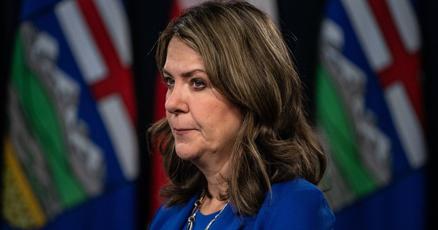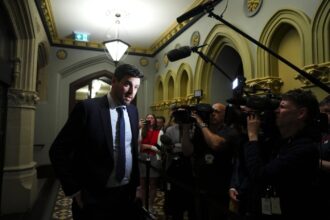In a pivotal moment for federal-provincial relations, Alberta Premier Danielle Smith characterized her first face-to-face meeting with newly-minted Prime Minister Mark Carney as “productive” and a “positive first step” toward addressing long-standing tensions between Ottawa and the resource-rich province. The highly anticipated encounter, which took place in Calgary on Friday, marks an early attempt by Carney’s government to reset relations with Alberta following years of friction.
“There’s always going to be things that we don’t agree on,” Premier Smith acknowledged during a press conference following the closed-door meeting. “But I think that we both recognize we have to look for the areas where we can collaborate together and be very respectful about the areas where we have different perspectives.”
The meeting comes at a crucial juncture as Alberta’s economy continues to navigate complex transitions in the energy sector while addressing climate change obligations. Smith indicated that discussions centered on economic development priorities, including carbon capture utilization and storage projects, which have emerged as a potential common ground between the environmentally-focused federal Liberals and Alberta’s resource development ambitions.
Prime Minister Carney, a former Bank of Canada governor who took office just weeks ago, expressed optimism about the dialogue, stating: “We had a constructive conversation about how we can work together to strengthen Alberta’s economy and create good jobs.” This measured approach suggests a deliberate strategy to avoid the confrontational dynamics that characterized relations under former Prime Minister Justin Trudeau.
The meeting reflects ongoing tensions over Canada’s carbon pricing system, which Alberta has consistently opposed. Smith reiterated her stance that the province should maintain authority over its own carbon pricing mechanisms, while Carney emphasized the need for national coherence on climate policy.
Energy sector analysts note that bridging ideological divides remains challenging. “There’s substantial daylight between Carney’s vision for climate action and Smith’s defense of Alberta’s oil and gas industry,” explained Dr. Martha Reynolds, professor of political economy at the University of Calgary. “But both leaders are pragmatic enough to recognize that cooperation on specific projects might be possible despite fundamental disagreements.”
Indigenous leaders also expressed cautious optimism about the meeting. Grand Chief Arthur Noskey of Treaty 8 First Nations commented, “We hope this new relationship between Alberta and Ottawa will properly include Indigenous perspectives on resource development and environmental protection.”
The discussion also touched on healthcare funding, another traditional friction point between provincial and federal governments. Smith indicated she pressed Carney on Alberta’s demand for increased healthcare transfers, reflecting the ongoing strain on provincial health systems nationwide.
Business leaders in Canada’s energy sector view the meeting as a potential turning point. “Any productive dialogue between Alberta and Ottawa benefits investment certainty,” said Jennifer McKenzie, CEO of the Canadian Energy Alliance. “The markets respond positively to political stability and clear regulatory frameworks.”
As Canadians observe this early diplomatic exchange, the question remains: Can Carney’s government forge a more productive relationship with Alberta while still advancing federal climate objectives, or will familiar tensions resurface once specific policy decisions must be made?























